Everything, Leather, Tutorials
Natural Leather Dye Experiment Part 1
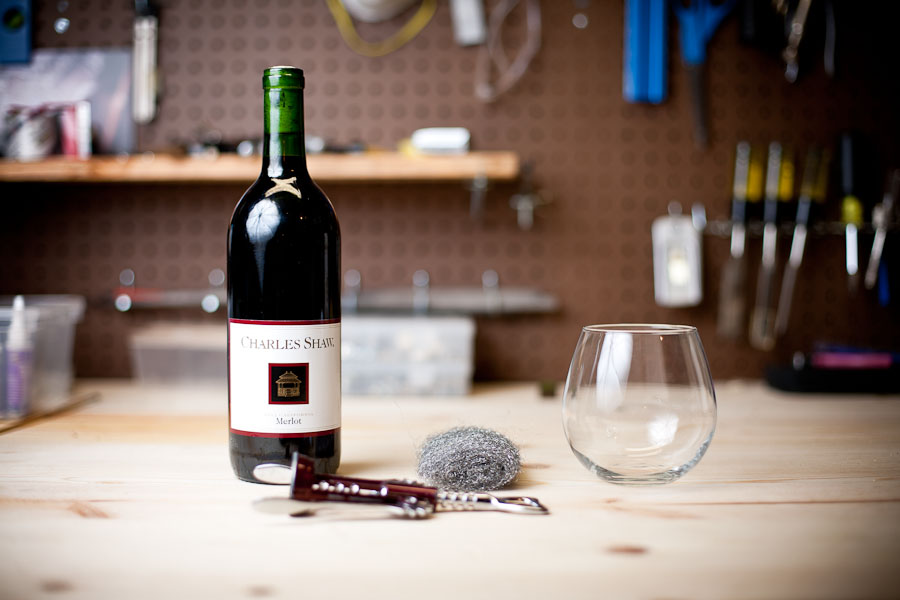 The last few weeks I have been continuing my experiments with natural dyes for my leather goods. . A few posts ago I wrote about my initial tests using the sun, walnut husks, and vinegar. I had great results with those elements creating a perfect variation in color tone. This week I have three new elements in the making – the first of which begins with “2 Buck Chuck” from Trader Joe’s.
The last few weeks I have been continuing my experiments with natural dyes for my leather goods. . A few posts ago I wrote about my initial tests using the sun, walnut husks, and vinegar. I had great results with those elements creating a perfect variation in color tone. This week I have three new elements in the making – the first of which begins with “2 Buck Chuck” from Trader Joe’s.
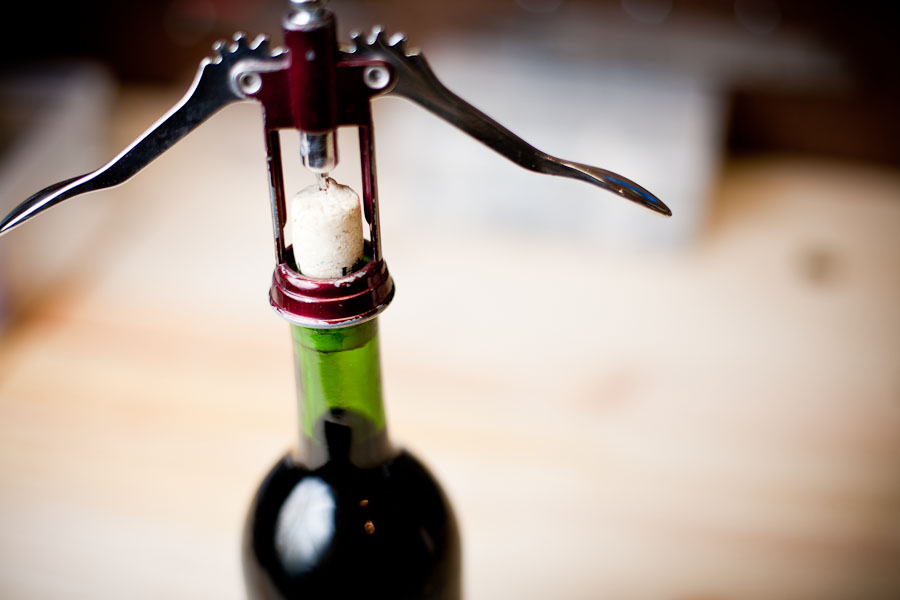
It’s a cheap $2 wine from a local marketplace and is the perfect base for me to start my fourth experiment.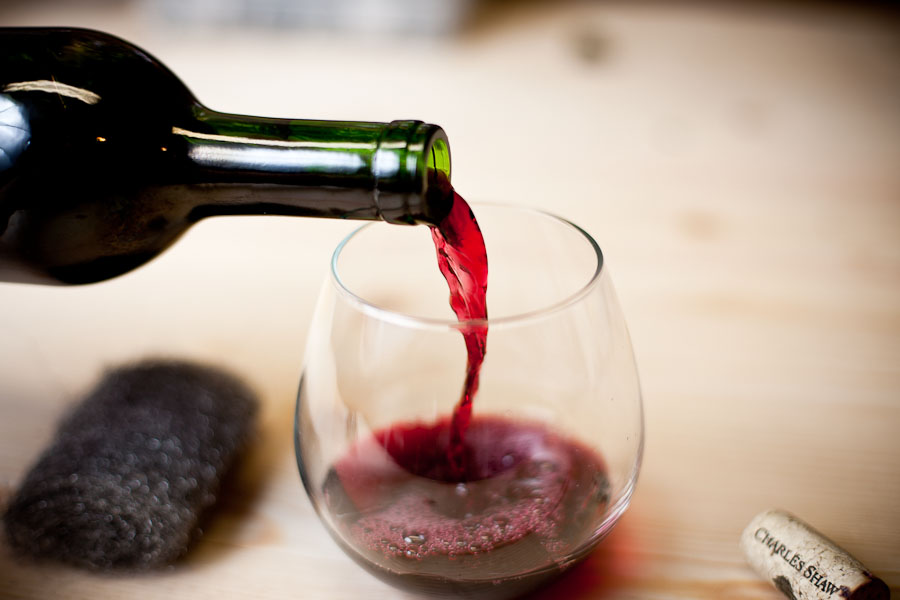
First I poured a little wine out of the bottle to make room for the next step, and allow myself a bit of late night respite.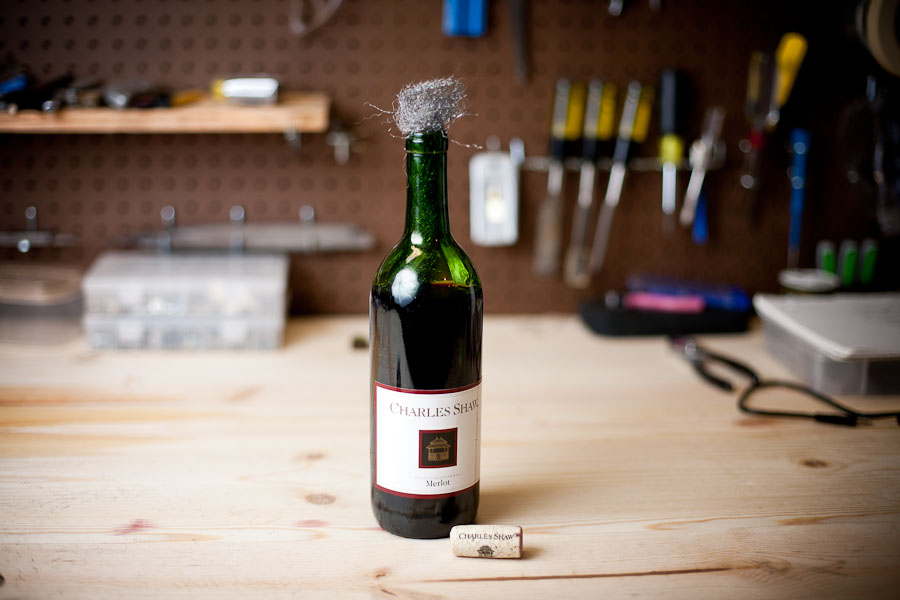
Next I took a steel wool ball and stretched it out. Using steel wool that is not coated in oil (most are) is essential. The steel wool should react with the wine in a way which I am not completely sure of the exact result. 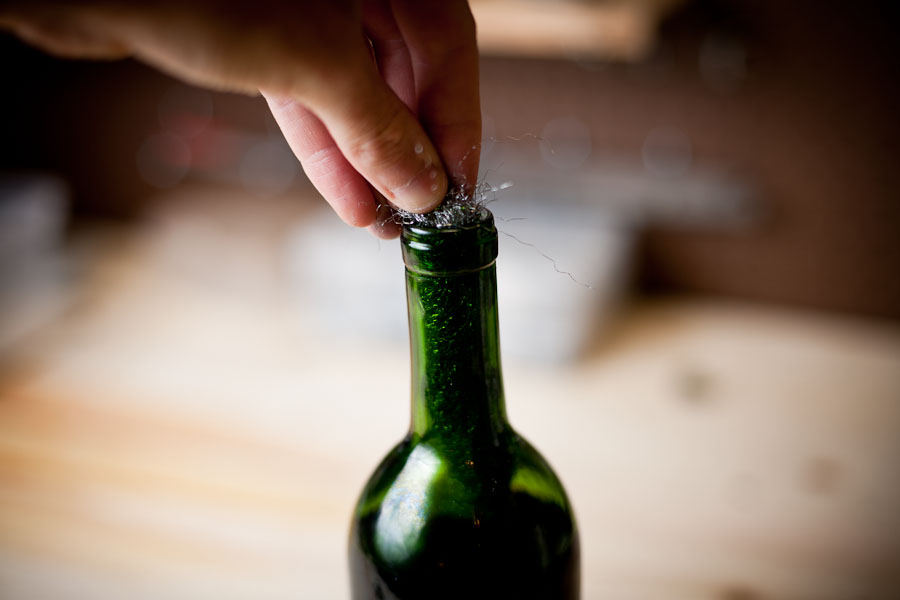
Stuff that steel wool in there.
Completely submerge it.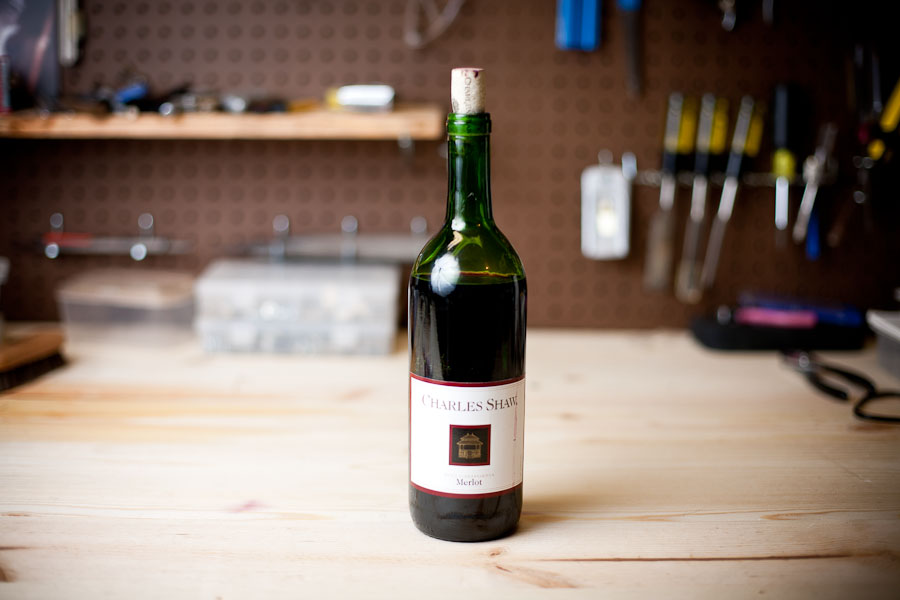
I corked the bottle and let it sit for a week or so. This seemed to work well for the steel wool and vinegar solution, making it quite stronger after a full week.
The next experiment involves blackberries. One package of them, heated up on the stove with a little bit of water, then mushed with a fork to release the juices.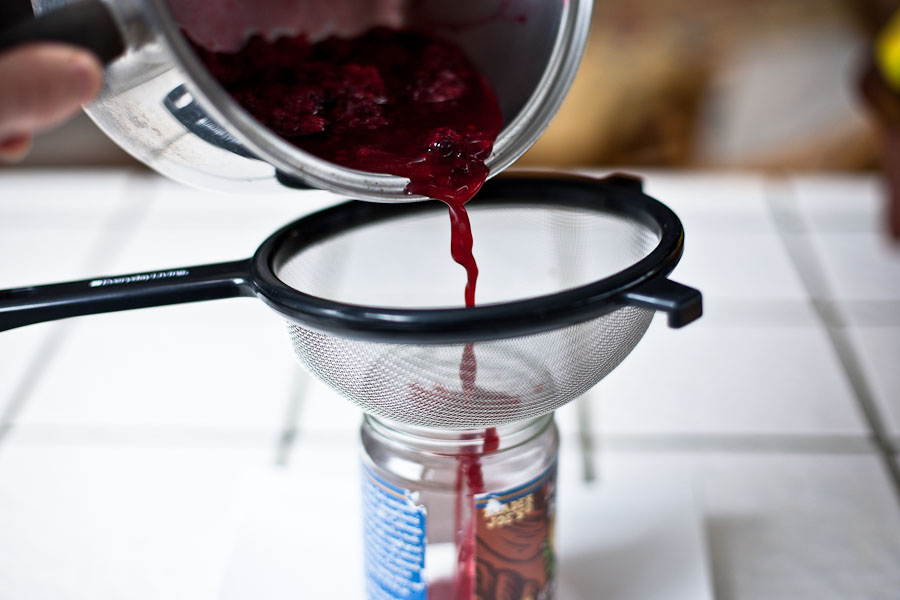
One the blackberries are all mush, I then poured it through a strainer into a recycled jar.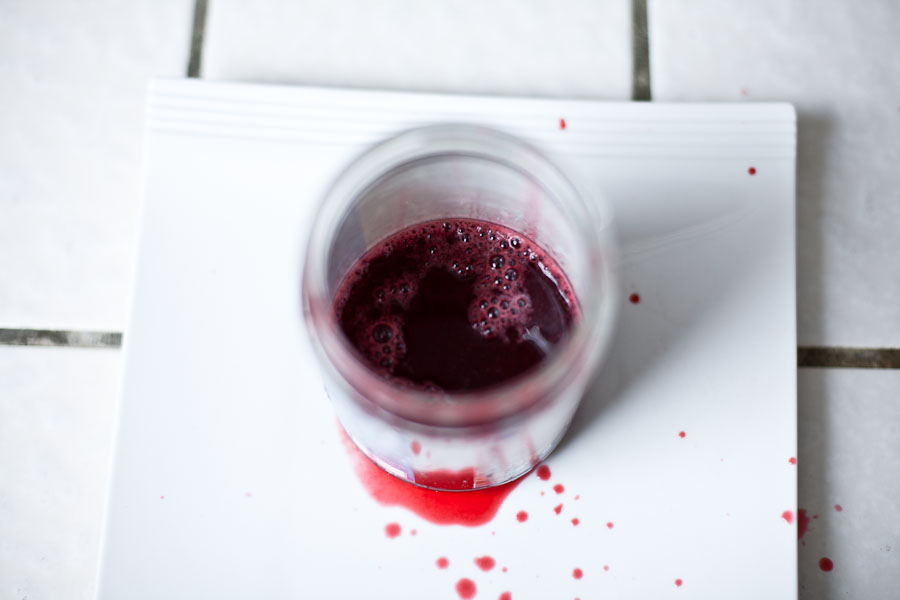
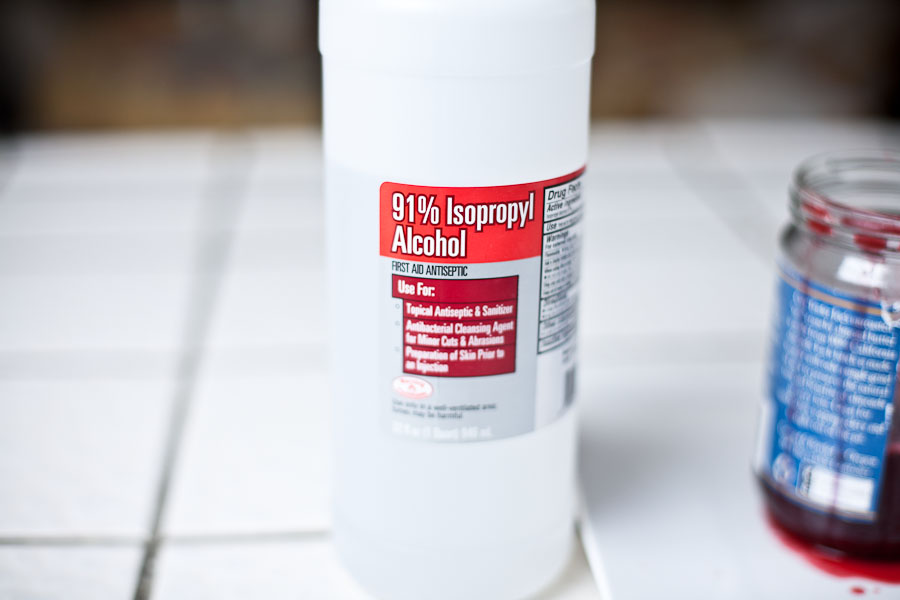 To keep mold and other nastiness from forming, I decided to add a bit of rubbing alcohol to the jar.
To keep mold and other nastiness from forming, I decided to add a bit of rubbing alcohol to the jar.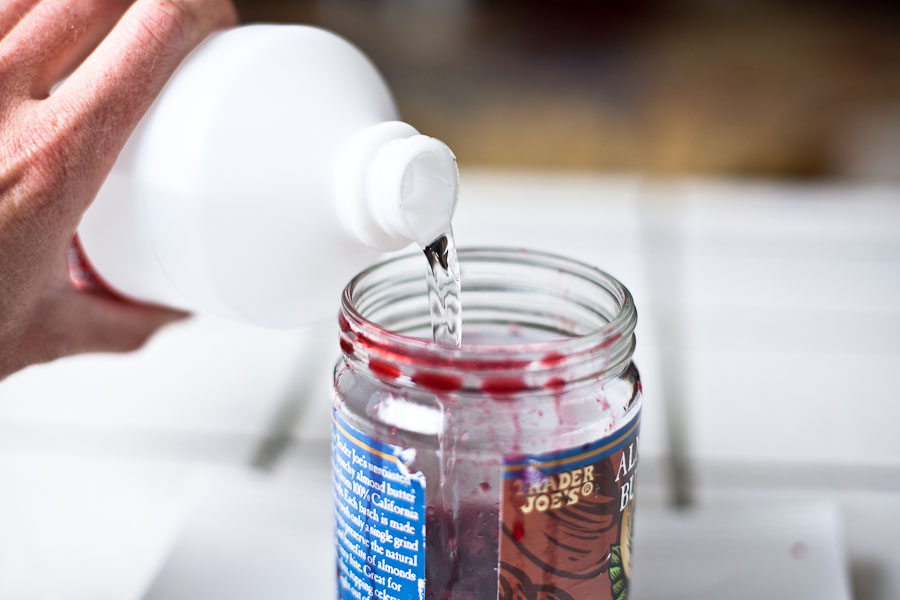
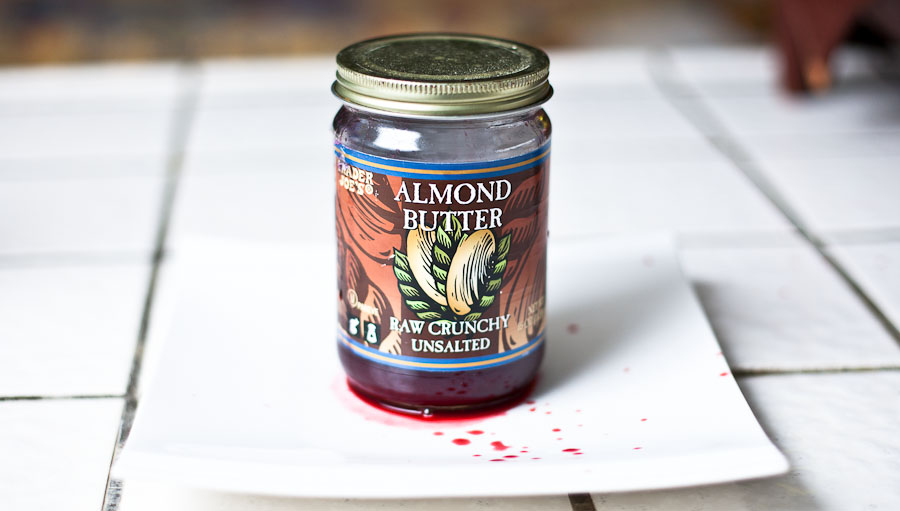 I am letting this one sit for a bit too – though it should be ready instantly – for soft blues.
I am letting this one sit for a bit too – though it should be ready instantly – for soft blues.
Henna is a traditional dye used in India for weddings, among many other things. People use it in the U.S. as a natural option for hair dyes. 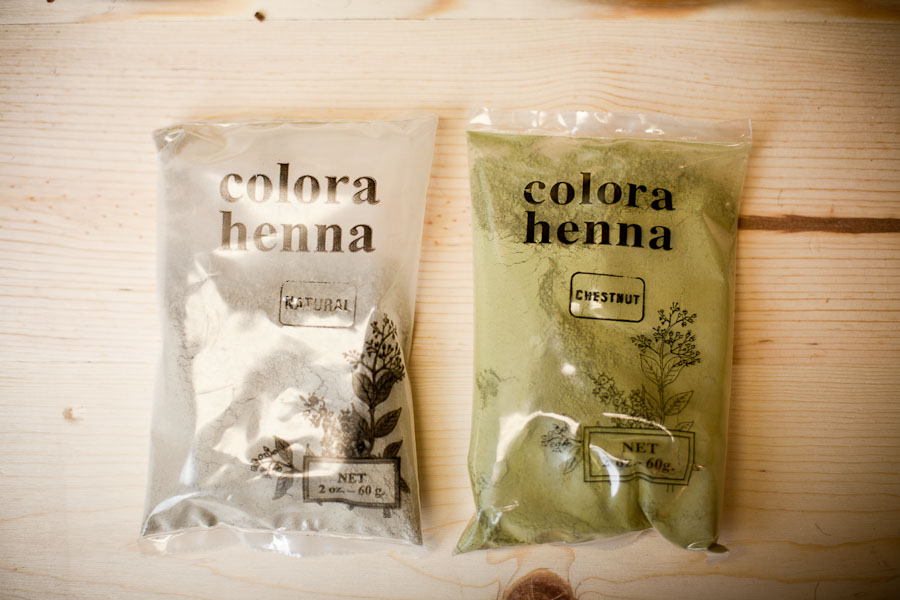
I decided to try out two mixes made entirely from plants – natural and chestnut.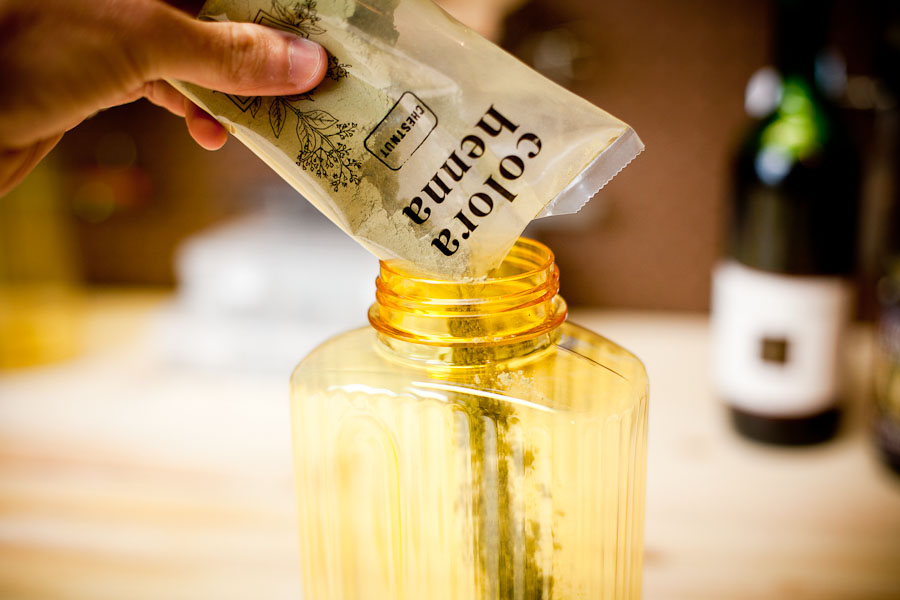
Pouring each powder bag into its respective container.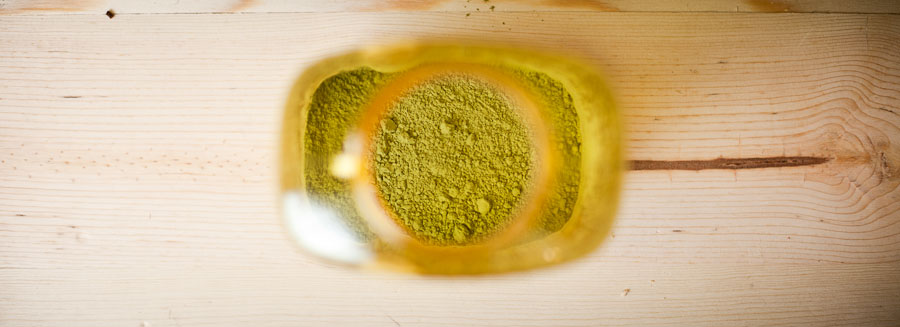
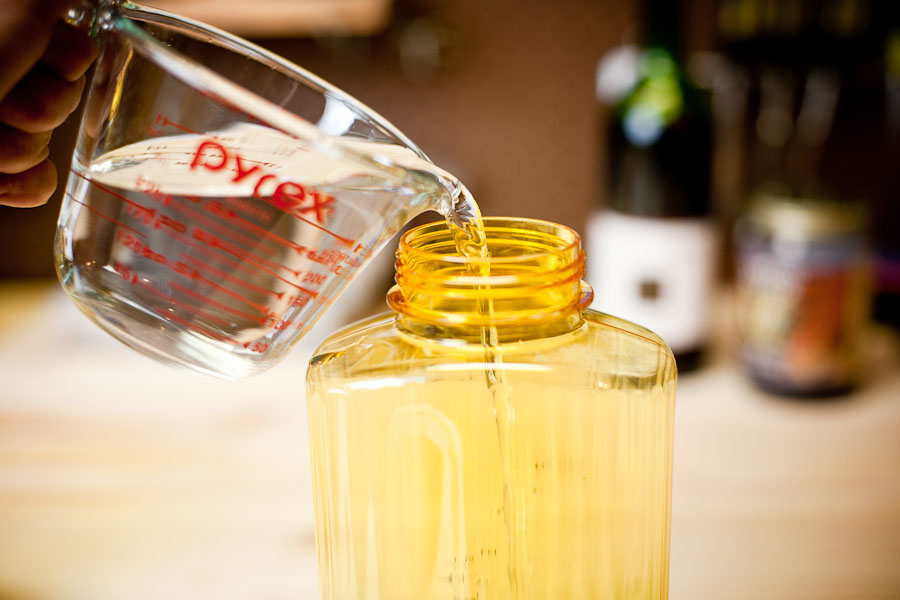 Then filling up each container to the top with tap water. This has me a bit skeptical about mold growth, but I need to see if the dye has any results first before fixing that problem.
Then filling up each container to the top with tap water. This has me a bit skeptical about mold growth, but I need to see if the dye has any results first before fixing that problem.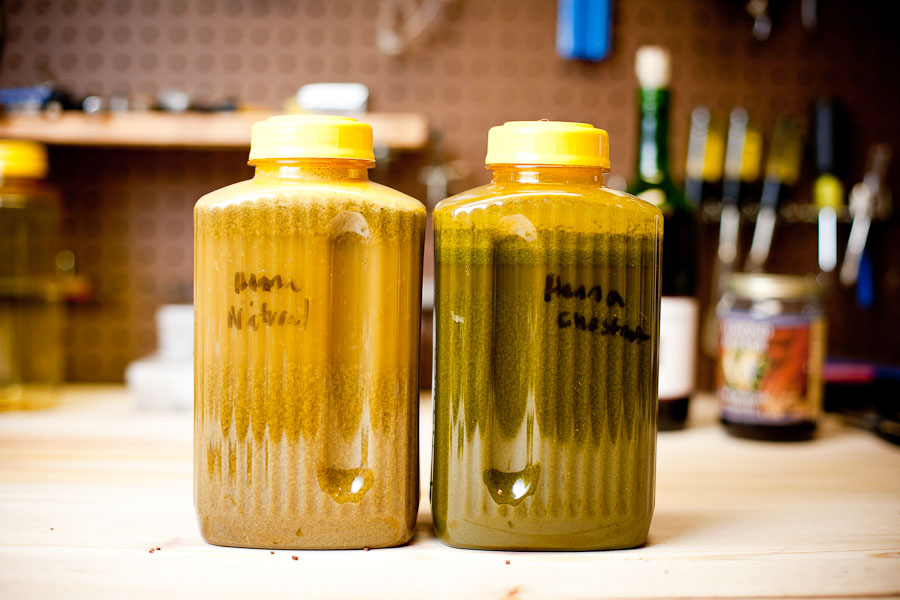
The henna dyes will also sit for a week or so, in order to make sure they are as potent as possible. I was most excited about this specific experimental dye, until I realized that the henna powder doesn’t dissolve, it stays a clumpy mess inside the containers.
In a week I will have the results and color swatches. I am betting on the 2$ Chuck as a winner.



I’m anxious to see the results of these experiments! I think my husband would shudder if I wanted to do this to his wine though 🙂
A tip for the henna (which I use to dye my hair). It releases best in an acidic environment so you should try using apple cider vinegar or lemon juice for best results. It will only need to sit overnight. And yeah, it won’t dissolve it only forms a paste.
You’ve given me some great inspiration for natural colorants here, we have mulberry trees, so I think I will test them out when they are ripe!
Francine – I should be posting my results early next week. Thanks for the tip on the Henna – I might try that out, though the whole pasty effect is not really conducive to easy leather working!!
Since it’s for leather I think a really gloopy paste should be fine. For hair it needs more body so that it sticks! 😉 I’ll be checking back next week.
Pingback: Natural Leather Dyeing Results (Part 2) | Mr. Lentz